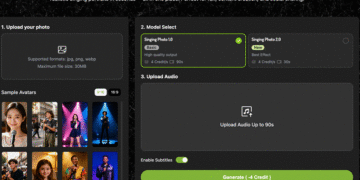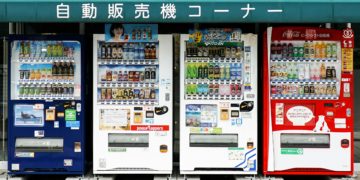A clear, practical guide to how modern vehicle tracking boosts visibility, efficiency, safety and customer experience in 2025, with tips on selecting a solution that delivers measurable returns.
Why tracking earns its place in the toolkit
Tougher margins, rising customer expectations and a tight labour market mean fleets must do more with the same resources. Vehicle tracking delivers the clarity needed to plan realistically, respond quickly and measure results credibly. It turns movement into insight, so managers can see what happened, understand why it happened and adjust tomorrow’s plan with confidence rather than guesswork.
Real time visibility that reduces uncertainty
Fleet vehicle tracking provides live location, ignition status and time on site, removing the blind spots that create stress and delay. Dispatchers can see exactly where vehicles are, how long they’ve been waiting and who is best placed for an urgent job. The fog lifts from daily operations, calming the working day and reducing the number of phone calls needed to coordinate people, parts and customers.
Planning agility when the unexpected arrives
Roadworks, staff illness and last minute orders will never disappear. What changes with tracking is the speed of response. A live map and accurate ETAs allow rapid reshuffling without breaking commitments elsewhere. Managers can divert the nearest suitable vehicle, notify customers early and protect schedules. Agility is not a slogan, it is the practical ability to change course without chaos.
Fuel savings from smoother driving
Idling hotspots, harsh acceleration and speeding are visible once journeys are logged consistently. Coaching drivers with fair evidence produces smoother style that protects fuel and reduces wear on brakes and tyres. Route analysis trims wasted miles. Over a year, small improvements compound into meaningful savings, which is why finance teams often view tracking as a net reducer of operating costs rather than a new expense.
Maintenance that is planned, not panicked
Unexpected breakdowns are expensive twice over. They create missed jobs and rush charges. Tracking systems that read engine data and utilisation patterns can flag vehicles likely to need attention, so workshops schedule work during natural lulls. Fewer roadside failures mean fewer disrupted days for drivers and fewer emergency hires for managers who would rather avoid last minute costs.
Accountability that simplifies admin
Accurate arrival and departure times remove ambiguity from timesheets and invoices. Disputes about time on site and route taken are replaced by facts that both parties can accept. Automated mileage capture improves expenses and HMRC compliance. Admin teams spend less time on manual reconciliation and more time on activities that add value, such as customer follow up and performance analysis.
Safer fleets with fewer incidents
Security features such as movement alerts, tamper detection and driver identification deter unauthorised use. When incidents do occur, quick escalation speeds recovery. Behaviour insights help target coaching where it matters most, reducing harsh events that correlate with collisions. A safer fleet lowers stress for drivers and shortens claim cycles for managers who want problems resolved without drawn out debate.
Smoother insurance conversations
Underwriters reward evidence. Certified devices, consistent coaching and clear incident histories reduce uncertainty. When a provider can show a pattern of risk reduction, renewal becomes smoother and referrals drop. Over time that may translate into better terms or at least fewer hoops to jump through. Insurance stops feeling like an annual cliff edge and becomes a predictable business process.
Compliance that runs in the background
Duty of care, working time and city safety requirements generate paperwork if handled by hand. Tracking platforms produce standard reports that satisfy audits without weekend spreadsheet marathons. For operators who enter urban areas with additional rules, the ability to prove equipment health and capture evidence saves time and avoids penalties. Compliance becomes a by product of good operations rather than a separate project.
Better customer experience as standard
Customers value certainty more than perfection. Accurate ETAs, proactive updates and documented proof of service reduce missed appointments and follow up calls. When a complaint arises, facts resolve it quickly. The same tools that help dispatchers also help account managers, who can share reliable information without chasing colleagues. Quality feels higher because the business communicates with confidence.
A clearer path through the EV transition
Mixed fleets are now common. Tracking helps plan suitable routes for electric vans, manage charge windows and compare cost per mile across energy types. Managers can see which depots need additional chargers and which shifts suit electric range. Evidence replaces opinion, which avoids expensive missteps and keeps service promises intact while new powertrains bed in.
Data that builds a culture of improvement
The biggest long term benefit is cultural. When teams can measure performance simply and fairly, they engage. Depots compare results, share ideas and test changes. Leaders can set targets that feel achievable because they are grounded in data rather than wishful thinking. Small weekly gains become large annual improvements, and the fleet shifts from cost centre to competitive asset.
Integrations that remove swivel chair work
Tracking should talk to job management, payroll and customer platforms. When APIs are well designed, mileage flows to expenses, time on site updates work orders and delivery notifications inform customers automatically. The same information powers several processes at once. Errors fall, people repeat themselves less and stakeholders trust that the numbers match across departments.
Adoption that sticks because the tools make sense
Complex software fails if people avoid it. The best platforms are intuitive for office staff and straightforward for drivers. Clear prompts, minimal clicks and transparent policies build trust. Short training sessions are enough to get new hires productive. When usage is consistent, data quality stays high and managers can rely on the numbers when making decisions that affect pay, safety and customer service.
Measuring return with credible numbers
A sound business case tracks fewer theft losses, faster recoveries, lower fuel spend, reduced overtime and improved first time arrival rates. Add softer gains such as calmer phone traffic and fewer disputes. Because these figures live in the platform, it is simple to report them monthly. Budget owners see that tracking pays for itself, then funds further improvements through the savings it creates.
What to look for in a 2025 ready solution
Choose a platform that combines live tracking, security alerts, driver insights and solid reporting in one place. Seek open integrations, reliable hardware and professional installation. Insist on clear data ownership terms and straightforward support. Avoid products that bury essentials behind complex menus or that require constant manual export. A good tool should remove work, not move it from one screen to another.
A practical next step
If you want to see how an integrated platform brings these benefits together in day to day use, review a solution built for modern operations and mixed fleets. Crystal Ball’s approach brings security, telematics and compliance into a single, easy to adopt system that helps teams act quickly and measure results clearly. You can explore how it fits your operation by visiting the page on fleet vehicle tracking.
David Prior
David Prior is the editor of Today News, responsible for the overall editorial strategy. He is an NCTJ-qualified journalist with over 20 years’ experience, and is also editor of the award-winning hyperlocal news title Altrincham Today. His LinkedIn profile is here.












































































